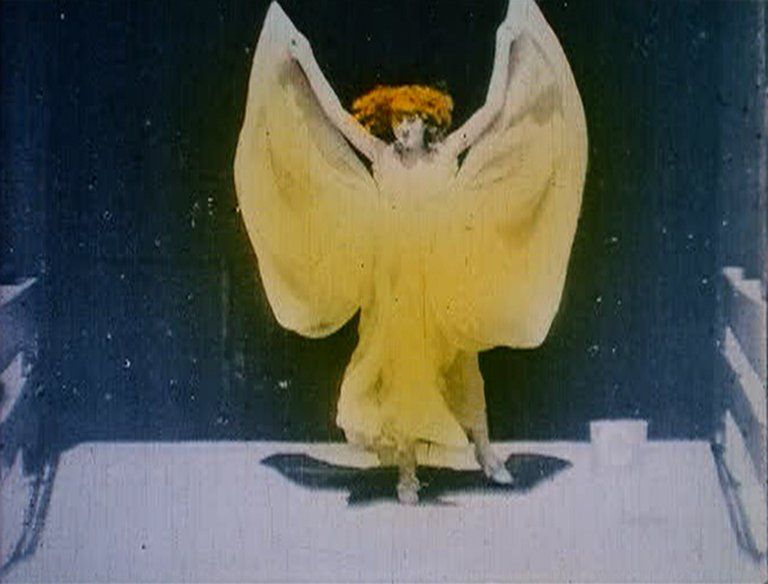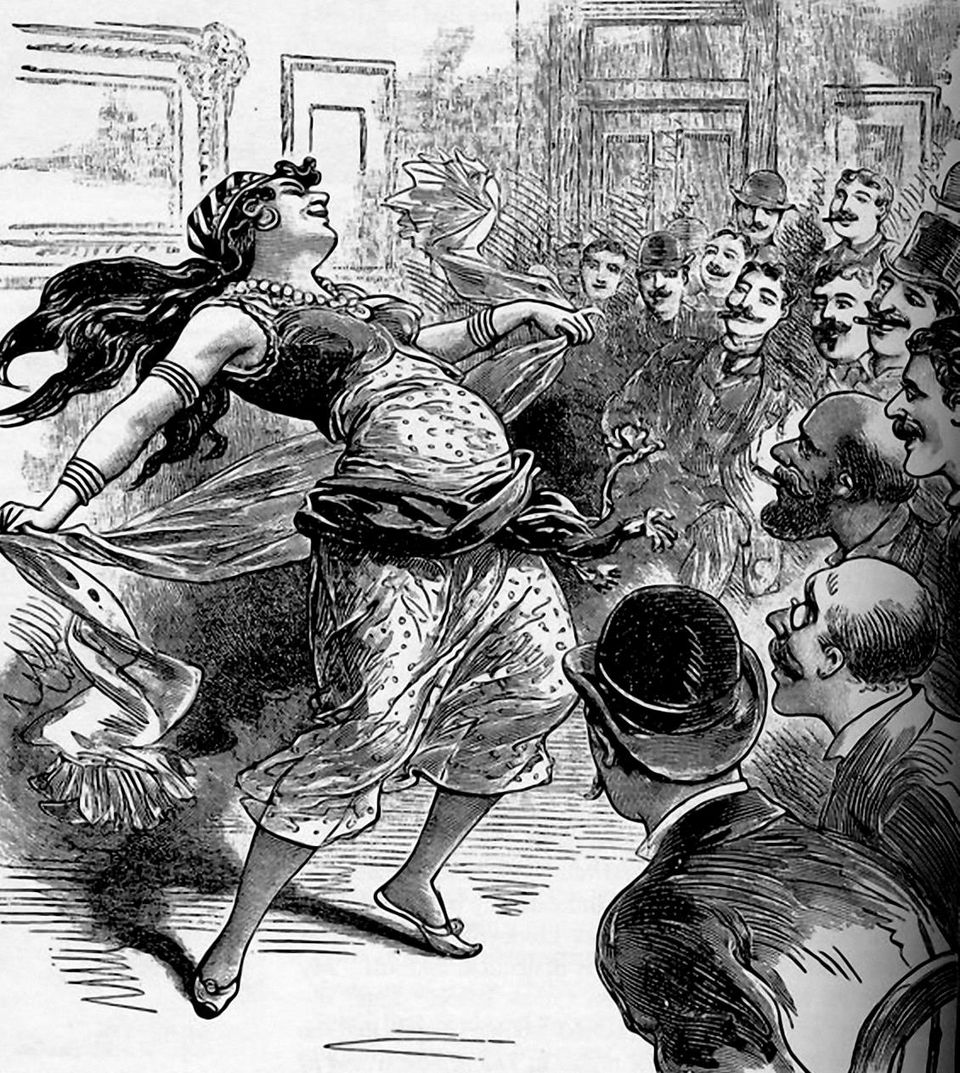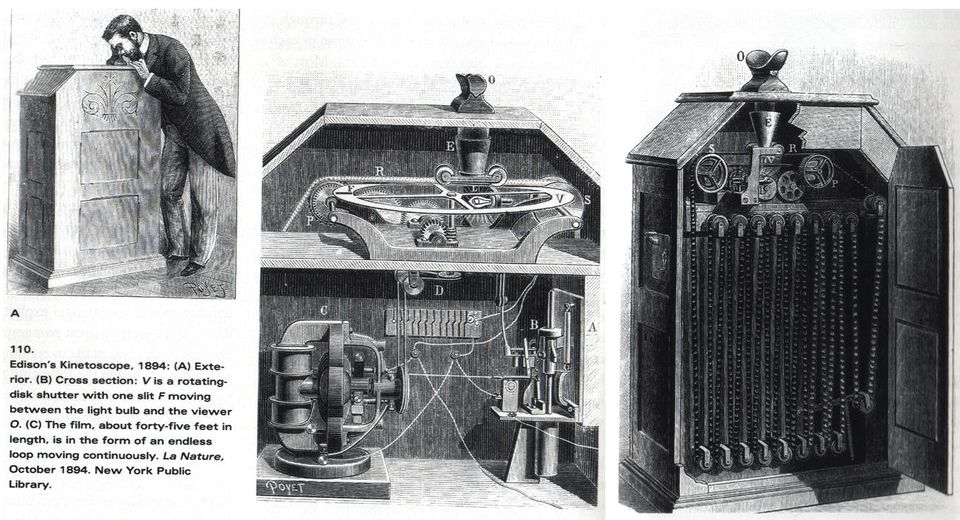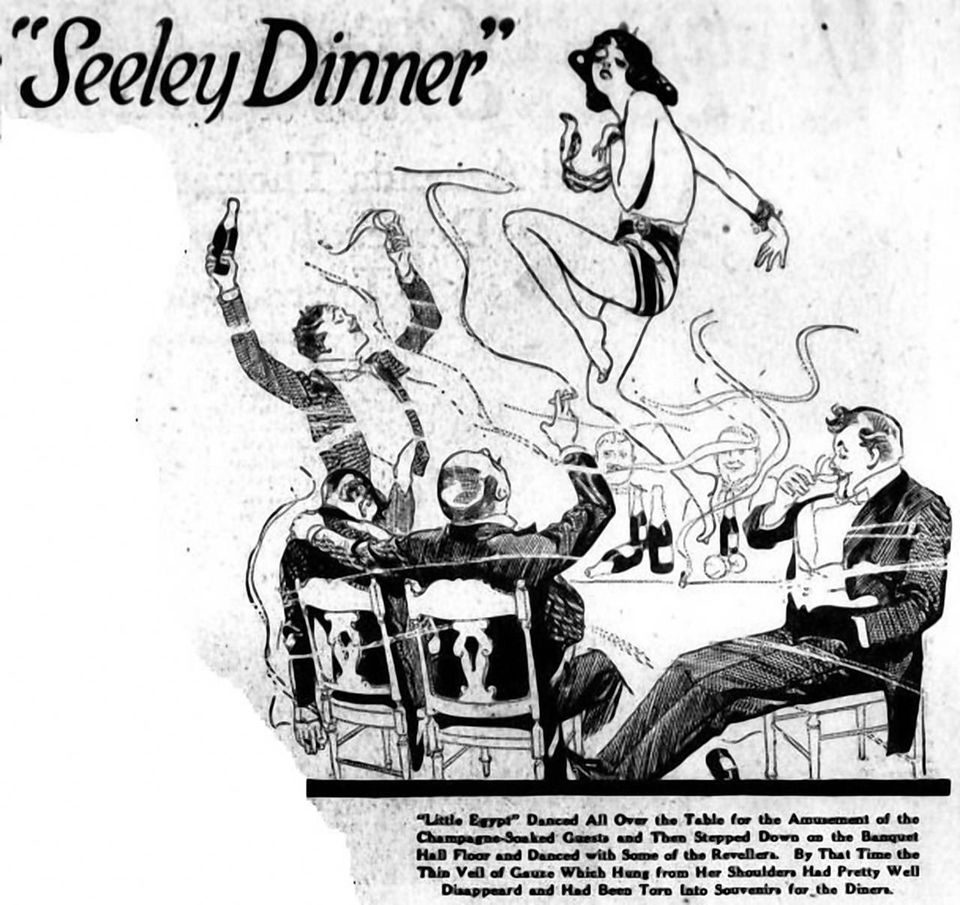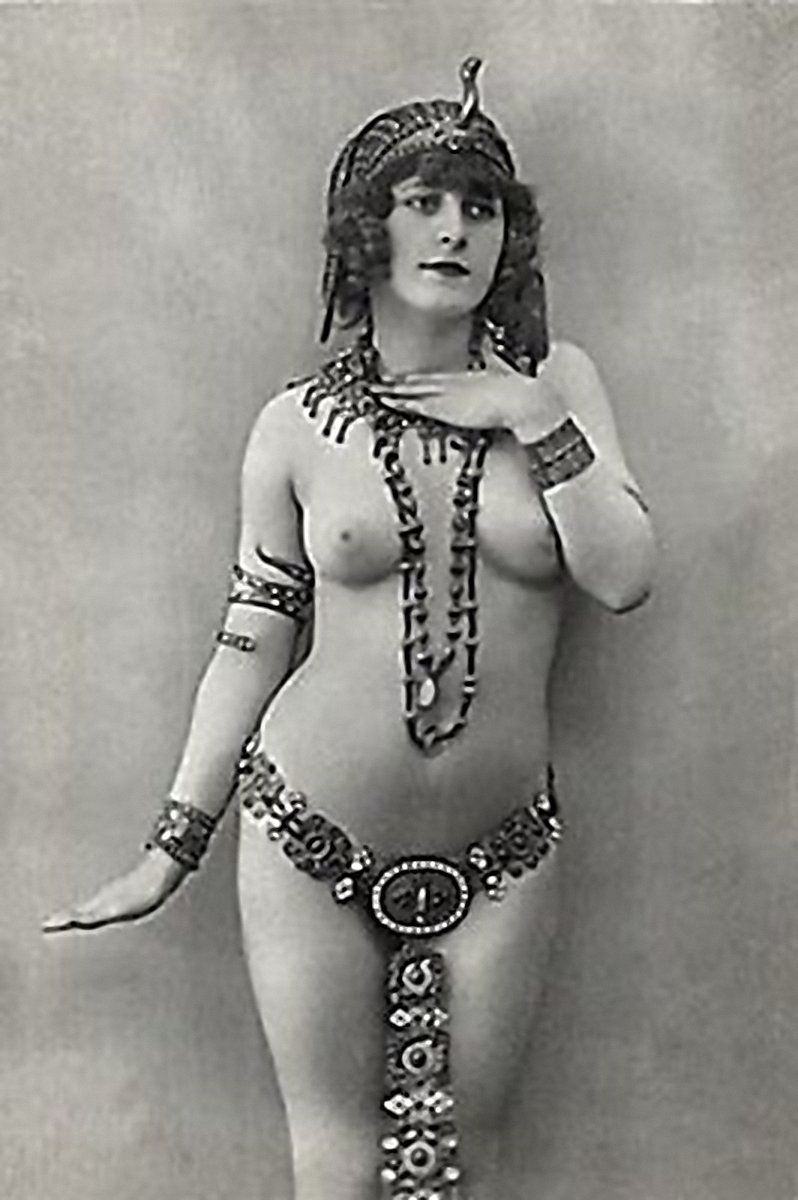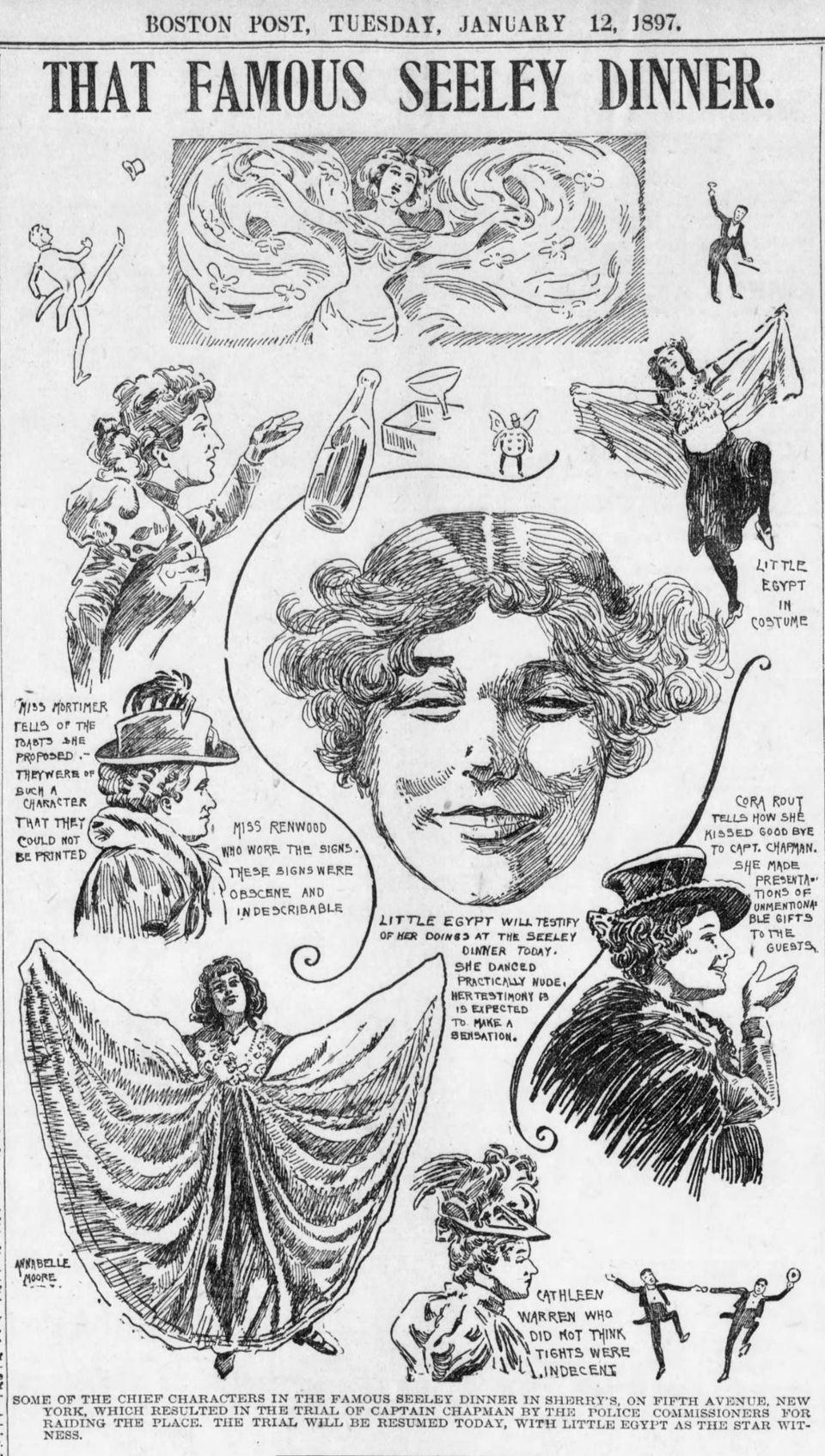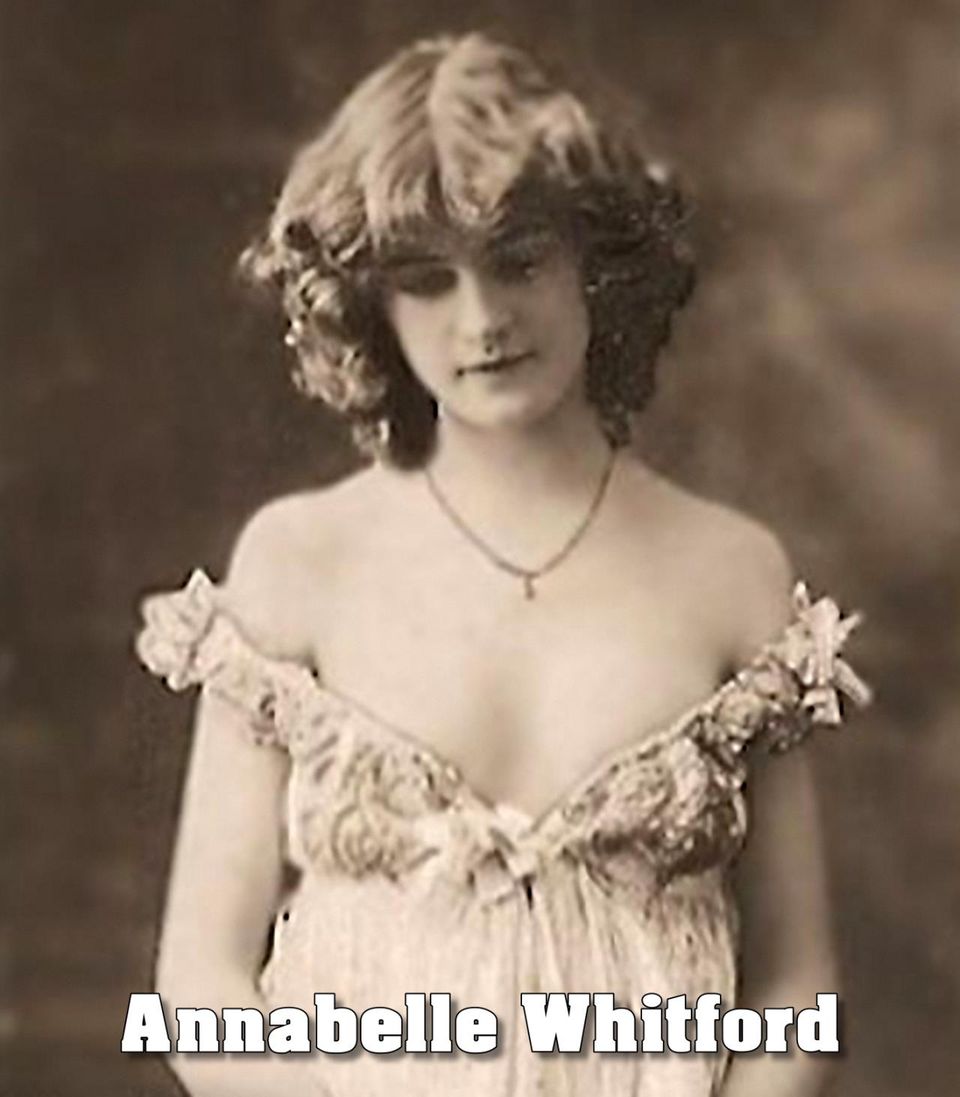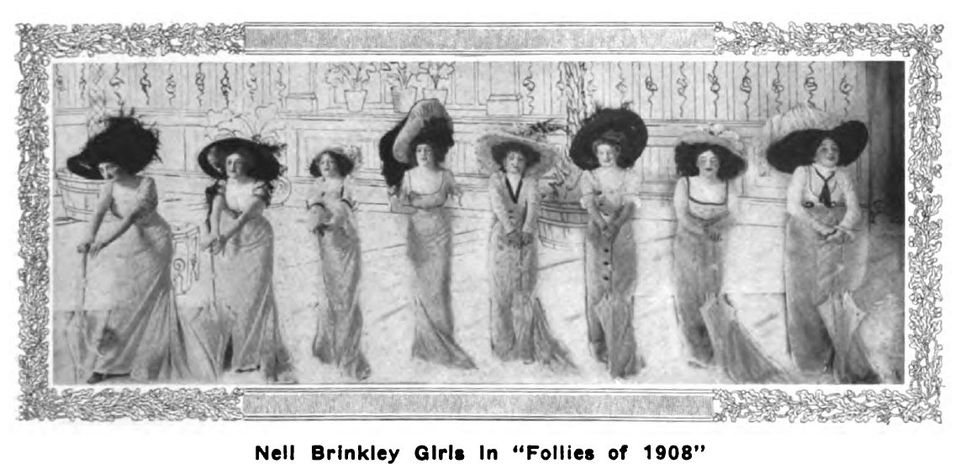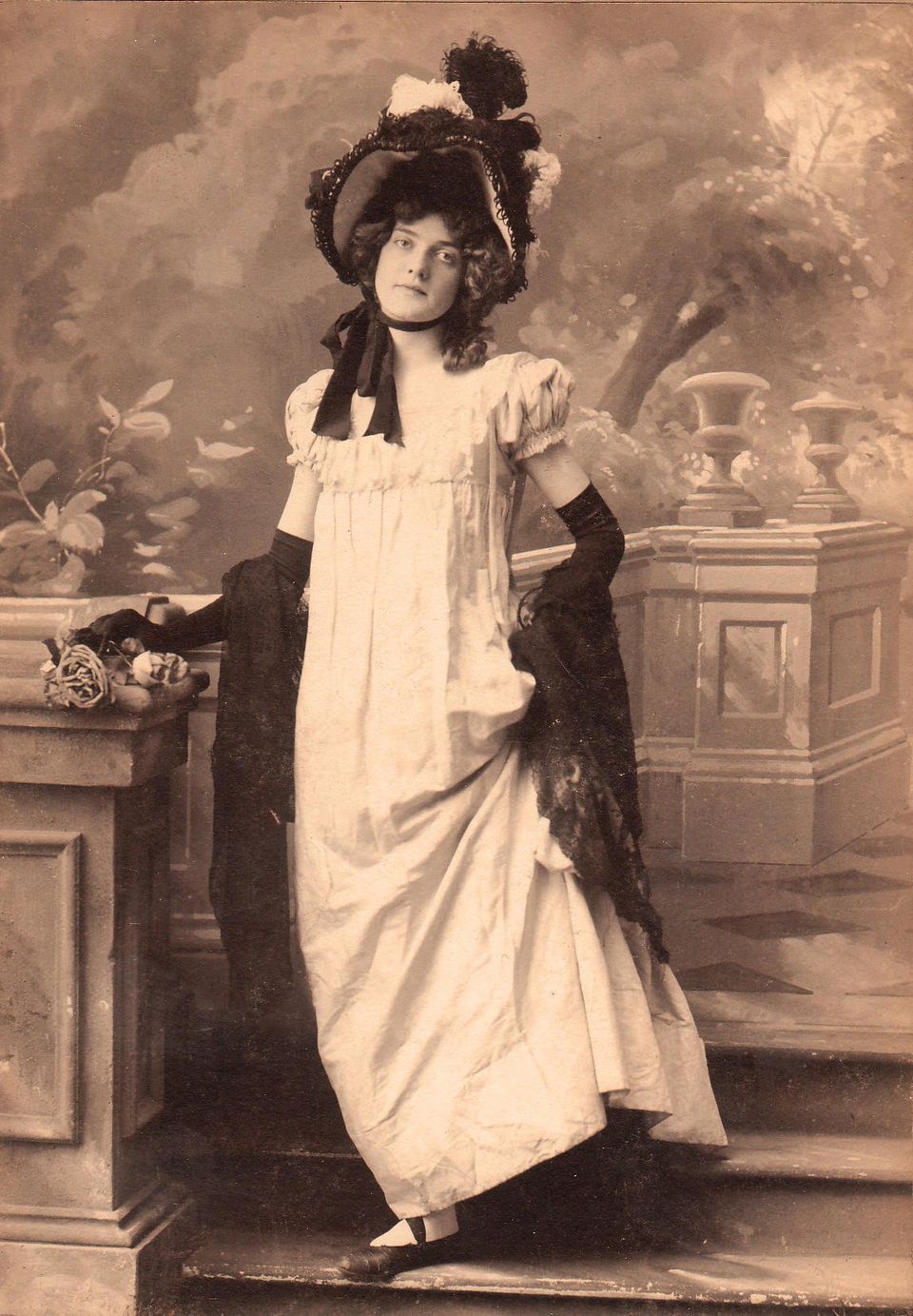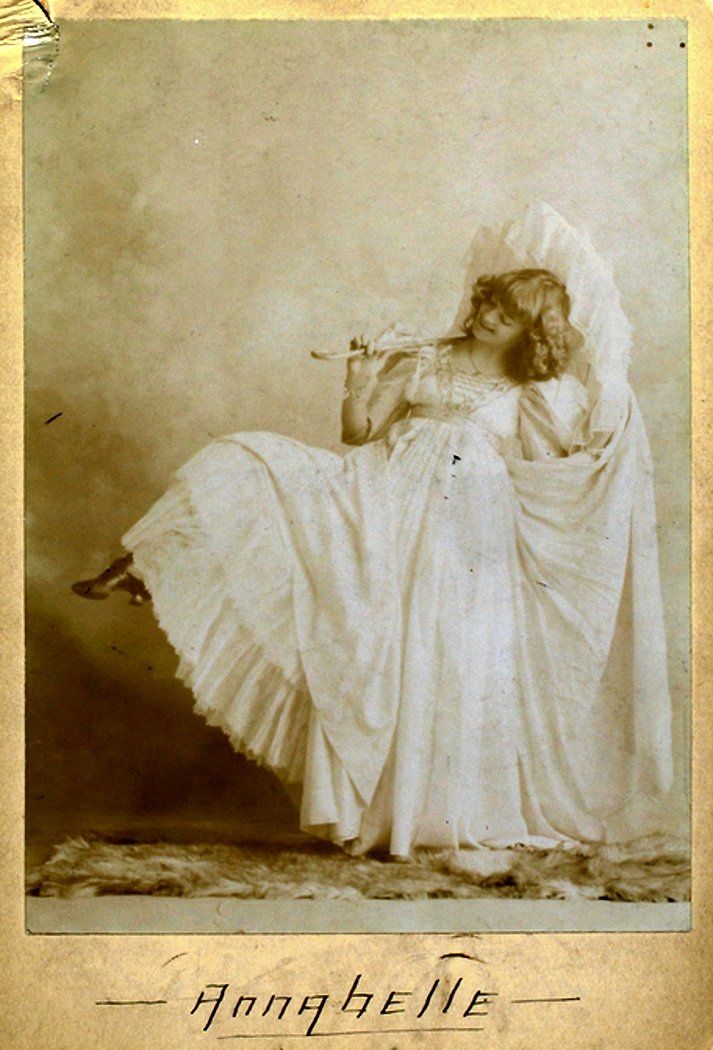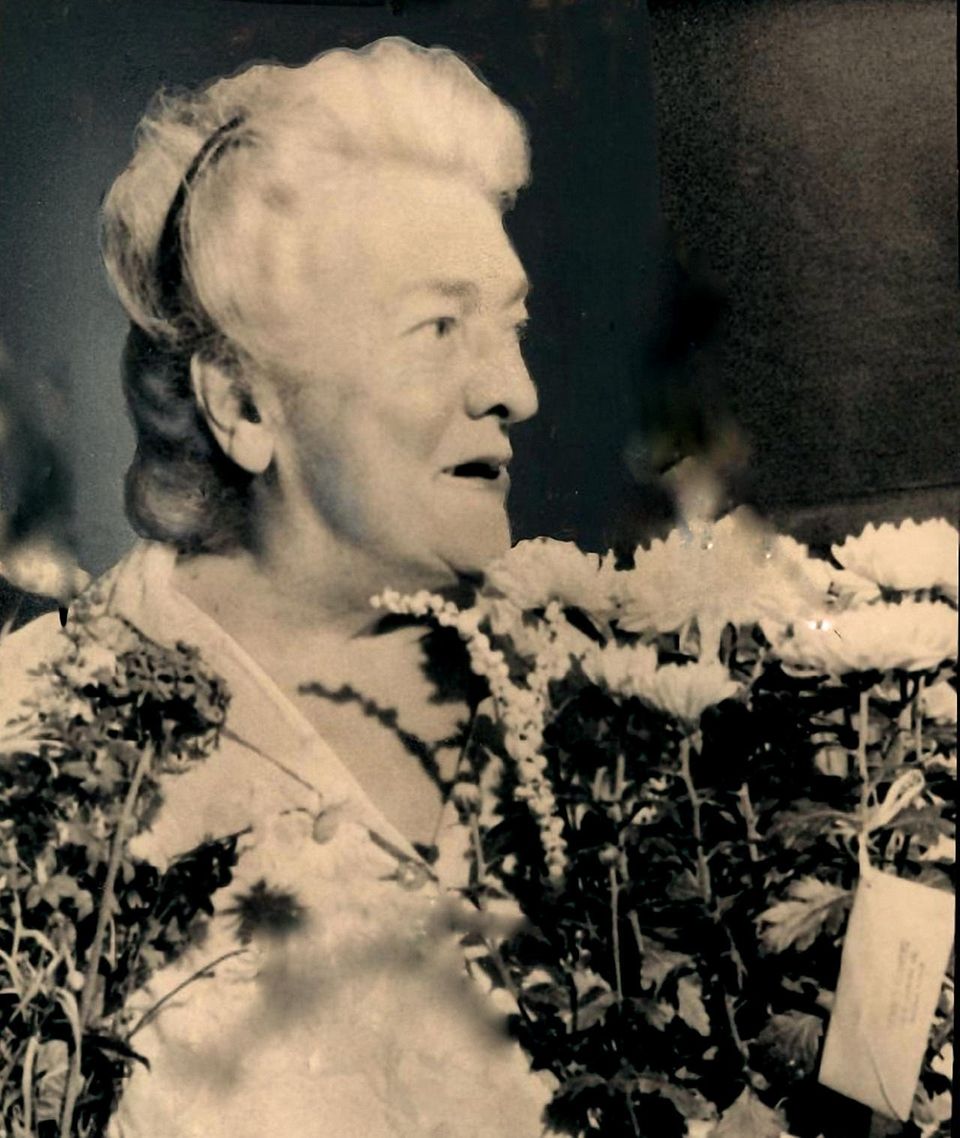ANNABELLE WHITFORD: The Scandalous “She Wouldn’t Girl”
She introduced America to eroticism. She was the "New Girl" for the new century!
Imagine being a 17-year-old Burlesque dancer who introduces Americans to exotic dance and then created a national scandal by refusing to take her clothes off at a high society party. This is the remarkable story of Annabelle, the first movie star in a color movie produced by Thomas Edison. The first Gibson Girl. The original Nell Brinkley Girl. And the personification of the Christy Girl. [1]
(Above) We produced the first and only documentary on Annabelle. Enjoy!
Annabelle first won fame as a child dancer known as Baby Annabelle at age 11. She was in demand at society functions. She grew up on the stage. [2] She had a show business mom. Her birth father, Edward P. Whitford had passed on when she was born. Her mother, Amanda Pittman, had led Amazonian type women in glittering burlesques. [3] Being on the stage was normal and natural for Annabelle. Doing Lois Fuller’s skirt dance seemed like the right thing to do for her.
Her mother remarried when Annabelle was 11 years old to William S. Moore. And Annabelle, for a time, used her stepfather’s last name.
She had a busy early life, not only on stage but also as a model. Charles Dana Gibson used her for his Gibson Girl. And Nell Brinkley had her model for her famous “Betty” character seen daily in newspapers nationwide. [4]
LOIE FULLER SKIRT DANCE
As a young teenager, Annabelle decided to be a dancer and began performing the Loie Fuller skirt dance. As she danced up and down the stage, her white skirt would change color as she passed by each of the colored lights. It may seem strange today, but back in 1893 electric light bulbs were still a new thing to most people. People knew of candlelight and even gaslight, but, electric lights? Not so much, let alone colored spotlights. And, even today her dance, as it was recorded by Thomas Edison, will exist on YouTube forever. It still works. Annabelle was famous for her skirt dance then and she still is today.
Her talents gained her a reputation and opportunities.
THE COLUMBIAN EXPOSITION IN CHICAGO
In fact, at age 14 Miss Annabelle Moore comes to the world’s attention at the Columbian Exposition in Chicago (aka Chicago World's Fair) in 1893 where she introduced skirt dance exotic burlesque to the world. She was the talk of the Exposition.
And there was another young teenage gal getting attention at the Expo. And that was Little Egypt. Catherine Devine took on the show name Ashea Wabe and appeared as Little Egypt. There were others. She once stated: "It's just this way. There are four Little Egypts in this country, three in Chicago and one in Minneapolis. They claim to be Little Egypt, but I am the only genuine one." Despite her claim, she was probably one of the several rotating dancers doing Little Egypt in the Egyptian Theatre during the Expo. And it must have been something to watch. Some people claimed they had seen her dance the hootchy-kootchy in the nude, wearing nothing but a diamond garter. Legend has it that Mark Twain suffered a coronary after seeing her dance. But the actual historical facts of Little Egypt are scarce.
Just a little perspective here. This was America’s first major introduction to Belly Dancing. Legend has it that Little Egypt both scandalized and delighted visitors when she danced at Expo's Egyptian Theater. Further, it inspired the Expos entertainment director (and later a U.S. Congressman) Sol Bloom, to coin the term "belly dance," which was known prior to many Americans as the hootchy-kootchy dance. [5] The hootchy-kootchy is a catch-all term used to describe sexually provocative belly dancing. Little Egypt inspired Bloom to write the lyrics, "There's a place in France/where the women wear no pants, ...where the naked ladies dance", etc. [6]
Ashea Wabe as the nude Little Egypt was later to intersect with
Annabelle again in a huge scandal.
THOMAS EDISON
After the 1893 Expo Annabelle moved to New York and connected-up with Thomas Edison and made her first film at 16 in 1894. Later she performed for the famed Biograph Studios.
Edison marketed his films everywhere in his new 1887 devise called the Kinetoscope. The public would pay 6 dollars, in today’s money, to watch a short film clip. Remember this was before movie theaters. People had never seen a moving picture before. And here was Annabelle. They could not get enough. Her dance films were literally worn out from overuse in the Kinetoscope. Edison had to send out new prints to replace the worn prints, so much so that his negative wore out as well. Annabelle had to come in and perform for the cameras again. It is said she introduced eroticism in film. Sex sells and Edison knew it and made a ton of money from his Annabelle films.
The sale of her Edison films was further boosted in December 1896 when it was revealed, in a scandal that made all the newspapers, that she had been approached to appear naked at a private high society Seely dinner party at Sherry’s Restaurant.
THE SCANDAL
Annabelle and Little Egypt were
nationwide icons. And a certain group of men wanted them to dance at their
dinner party, and they were offering $607.24 [7]
for their services. [8]
According
to later court testimony, 17-year-old Annabelle said, “(My stepfather) told me
that Mr. Liman had an engagement for me to dance at Sherry’s at midnight… I
called on Mr. Liman at his office.
“He said
it was a party of 22 men. He asked me if I did high-kicking. I said, ‘yes.’ Mr.
Phelps entered the office with another man and I told them what dances I did,
and Mr. Phelps said, ‘yes that is very good. We want you to do something more.
We want you to dance nude from the waist down.’ He said that little Egypt was
going to dance as he wanted her to. I could not speak in answer to Mr. Phelps
at first. Then I said, ‘I would not do what they wanted.’ Mr. Phelps then asked
me if I could not arrange to drop my tights at the end of the dance, saying
that by that time the men would be so drunk that it wouldn't make any difference what I did. I got out of the office as
well as I could and went straight to my step father's office and told him I had
been grossly insulted.” [9]
Mr. Moore was furious and went straight to police Captain Chapman and told him of the event that was to take place at Sherry’s, telling him that Little Egypt was scheduled in the “all-together.” Captain Chapman said he would stop the event. And so, on that cold dark night of December 19, 1896, when many of the richest men in New York City were enjoying themselves at a bachelor party, suddenly the event was raided by the police.
Little Egypt later testified in court she was nude and wore only a costume of gauze, which she said was quite transparent. Witnesses said that a dozen men followed her into the dressing room when she retired from the stage and pulled off her costume of gauze and pulled her about the room. [10] She said, “…they mauled me and tossed me about, but they took no liberties at all.” [11]
Besides Little Egypt, singer Lottie Mortimer also performed fully exposed to the men. [12]
For her encore dance, Little Egypt said, “I was to dance entirely nude, except for silk stockings and slippers.” [13] But, the police had arrived.
The Newspapers reported: “From Harlem to the Bowery, from the east to the North River, the Seely dinner is being discussed over cold coffee, hot toddy, in the pulpit and in the depths of the Bowery … Little Egypt, the darling of the ‘Johnnies,’ who was the central figure at the Seeley dinner at Sherry’s, (and she told all). … (Everyone was) reading her account of how she thrilled and delighted over a score of .. bachelors on the memorial night of Dec. 19, 1896.” [14] [15] Picture cards of her sold out all over the city.
Belly dancing had its official American birth.
And Annabelle became the famous “She Wouldn’t Girl.”
Then, during the trial, Annabelle’s stepfather succumbed to a cold contracted during the Chapman trial and died. He had conducted a vaudeville agency. He was just 52. [16] Annabelle was devastated.
MARRIAGE
In 1899 she announced her engagement to Baron Wen-ces-las von Wreden-berg of Austria-Hungary. She said they had met just 3 weeks previously. [17] But, the marriage apparently never happened.
Five years later, in 1904, she announced her engagement to the very wealthy Henry Bissing, head of the Bissing Electric Company in New York. [18] [19] The marriage lasted for a few years, but for whatever reasons it ended.
During these days of engagements and marriage, Annabelle changed her stage name back
to her birth name Annabelle Whitford.
And can you blame her? Apparently, she really wanted to distance herself from a
failed marriage, the death of her
step-father and the scandalous trial.
FIRE
Annabelle continued to make the news. While performing the Queen of the Fairies in “Mr. Bluebeard” at the Iroquois Theatre in Philadelphia in 1903, that magnificent building burned down claiming scores of lives. Initially, it was misreported that Annabelle was one of those mortally wounded. [20] [21] But reports of her death were very premature. She would live for nearly 60 more years. The initial reports had her confused with another Annabelle who did die in the fire.
MORE FAME
Regardless
of her name, she continued to be well known on the New York Stage. She danced
Loie Fuller's Serpentine Dance, and her famous Skirt Dance, as well as her new
Flag Dance, where she dressed in American colors of stars and stripes and waved
the flag while she danced, as well as the beautiful Butterfly Dance where she's
used many different colors and danced like a
fairy butterfly as well as performing the Mermaid Dance, Tambourine Dance,
and the Sun
Dance.
THE ZIEGFELD FOLLIES
Annabelle was selected by Florenz Ziegfeld for the premiere of his Follies in 1907 for three reasons: 1) Her fame. 2) Her talent. 3) Her resemblance to the Gibson Girl. [22]
Annabelle starred as the Gibson Bathing Girl in the first of the Ziegfeld Follies (1907) and popularized the song “That’s Why They Call Me the Gibson Girl.” [23]
In the next Follies of 1908, she was the Nell Brinkley Girl, the new New Girl. The Gibson Girl was fading.
Annabelle is reported to have earned upwards of $26,370, in today’s money, per week with Ziegfeld.
In the Follies of 1909, Annabelle played Venus surrounded by various pretty girls as goddesses in the first act. And was a hit later in the show as the Brinkley Bathing Girl.” [24]
In 1909, her last year with the Follies, she was on stage with one of the highest salaried woman comedian in the world, Eva Tanguay, “the girl who made vaudeville famous.” And, Eva had a well-planned assault on stuffy Victorian convention. [25] More on her in another chapter.
Despite the
high salaries of Annabelle and Eva, both would decades later die penniless,
living in devastating poverty after being largely forgotten.
CULT FOLLOWING
But, during the 1900s Annabelle had a huge cult following. People could not get enough of her. She had a way of morphing into whatever the New Girl was. It was a time when women were being redefined and continually transformed. From the Victorian Woman to the Edwardian Woman to the Gibson Girl to the Nell Brinkley Girl. And all eventually this leading to the 1920’s flapper. It was quite a journey. Annabelle served as the role model from one type of woman to the next. She was the embodiment of the ever-evolving New Girl of her time. And she knew this. And capitalized on it. [26] [27]
BEGINNING OF A NEW DECADE
In 1910 she was one of Oscar Hammerstein’s "Prima Donna's" in his 'Light Opera Company.’ A very high honor.
In her 1910 various stage shows Annabelle, the original Gibson Girl and Nell Brinkley Girl, did skits as “The Flirting Girl,” The Newspaper Girl,” and “The Aeroplane Girl.” Just a little perspective here. It had been a mere seven years earlier that the Wright Brothers had famously taken wing in their first powered aircraft at Kitty Hawk. And here was Annabelle turning off all stage lights in the auditorium, except for one spotlight that shown on the airplane that she flew over the heads of the audience and sang. The plane was on a track, of course, but she had claimed flight for women. The audience went wild. [28] It can be said that she opened the door for women in flight.
Plastic cosmetic surgery? Nearly unheard of in 1910, but Annabelle went under the knife and had her natural dimples removed. Many women at the time had doctors give them artificial dimples. But Annabelle, being the trendsetter that she was, went the other direction and had New York doctor W. Hubert Miller make small incisions and eradicate hers. [29]
She remained active on stage until her marriage and subsequent retirement in 1912.
RETIREMENT
She retired to Chicago with her new husband Dr. Edward Buchan, who was two years her younger. Interestingly, they both developed severe arthritis in their senior years. They lived on just old age assistance. [30] He died in 1958, and she passed four years later in 1961. She was penniless, due to misfortune and bad investments. [31]
She leaves us an example of artistic passion connected to integrity. Annabelle and her influence live on, captured forever in her colorful dance films in cinematic history and even on YouTube.
She, more than most, helped define the New Woman for an entire generation. We are forever grateful for her.
_____________________________
FOOTNOTES
[2] The Washington Times (DC). Monday September 27, 1909. Page 4
[3] The Anaconda Standard (Montana) Tuesday, January 10, 1899. Page 6
[4] Los Angeles Herald, Saturday, July 16, 1910. Page 16
[7] $20 in 1897 is equivalent in purchasing power to $607.24 in 2018
[8] Boston Post, Tuesday, January 12, 1897. Page 8
[9] St. Louis Post Dispatch. Sunday, January 10, 1897 Page 1
[10] The Philadelphia Inquirer. Sunday, January 10, 1897. Page 2
[11] Boston Post, Tuesday, January 12, 1897. Page 8
[12] The Philadelphia Inquirer. Sunday, January 10, 1897. Page 1
[13] The Philadelphia Inquirer Wednesday, January 13, 1897, Page 1
[14] Boston Post, Tuesday, January 12, 1897. Page 8
[15] St. Louis Post Dispatch. Sunday, January 10, 1897 Page 1
[16] The Times (Philadelphia). Monday, January 18, 1897. Page 1
[17] The Indianapolis Journal. Sunday, August 6, 1899. Page 13
[18] San Francisco Chronicle. Sunday, February 7, 1904. Page 9
[19] The Boston Globe. Fri., Jan. 15, 1904. Page 9
[20] The Sun (NY, New York) Thursday December 31, 1903. Page 2
[21] San Francisco Chronicle. Friday, January 1, 1904. Page 2
[22] The Inter Ocean (Chicago IL) Sun., Dec. 15, 1907. Page 38
[23] 1955 Shamokin News Dispatch (Shamokin Penn.). Wed., Oct. 5., 1955. Page 4
[24] The Brooklyn Daily Eagle (NY). Tue., Nov. 16, 1909. Page 10
[25] Rosen, Jody. Vanishing Act: In search of Eva Tanguay, the first rock star. Dec. 1, 2009. http://www.slate.com/articles/arts/music_box/2009/12/vanishing_act.html (cited 2018-08-12).
[26] Pittsburgh Daily Post. Sun., April 10, 1910. Page 14
[27] Star Tribune (Minneapolis, MN) Sun., May 8, 1910. Page 27
[28] Pittsburgh Daily Post. Sun., April 10, 1910. Page 14
[29] The Philadelphia Inquirer, Sun., Nov. 20, 1910. Page 25
[30] Kingsport Times News (TN) Sunday, July 7, 1957. Page 23
[31] Beauties of The Past – Annabelle Whitford. Stuff Nobody Cares About, http://stuffnobodycaresabout.com/ (citied 2018-08-12)


